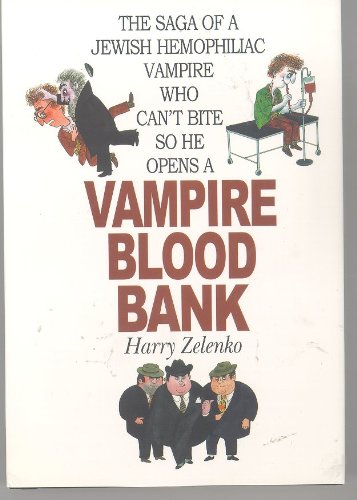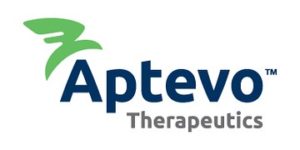Laurie Kelley
September 15, 2019
Samantha* lives in Montana, our fourth-largest state but with one of the lowest populations, at 1.05 million. This means that families with hemophilia have an extra burden of traveling long distances to a hemophilia treatment center (HTC). Samantha’s three sons with severe hemophilia, ages 18, 13, and 11, were used to the 11-hour drive to Denver’s renowned HTC and a 7-hour drive to the closest hemophilia hematologist.
What they
were not used to was a sudden denial by their insurance company of their hematologist-approved
factor dosage.
On January
1, 2016, Samantha switched to a new insurance company, Assurance*, which was
registered with the state exchange, or Marketplace. Six months later, Assurance
made a curious request. The company asked Samantha to provide the weights of
each of her three sons. This seemed odd, because Samantha always provided
weights when she ordered factor, but she complied. Then her hematologist and specialty pharmacy
received the same request from Assurance. The hematologist sent the weights,
along with a three-month prescription. But Samantha was baffled.
The reason
for the company’s request soon became clear. On July 11, 2016, Assurance sent a
letter to Samantha’s specialty pharmacy and hematologist explaining that the
boys were using factor outside the recommendations of the product insert (PI).
The PI is the set of instructions and medical information provided by the
manufacturer inside each package of factor. The insurance company claimed that
by using more factor per dose than was recommended, the family was acting
outside of FDA regulations.
Shortly
after, Assurance sent Samantha a letter declaring it would only authorize the
average dose according to the PI, contradicting the prescription of the boys’
hematologist, and cutting the hematologist-ordered doses by 65%.
This letter
shocked Samantha. “I reached out to Assurance via email to ask what was going
on,” she recalls. “The company replied, said the hematologist had been
notified, and I needed to contact the hematologist and have her reissue a
script at a lower dosage. The insurance company kept me out of loop as much as
possible.”
But
Samantha was smart: she made notes on every phone call and documented
everything.
Then
Assurance sent a one-page letter about the dosage change to the hematologist
and specialty pharmacy. Although Samantha requested a copy, she didn’t receive
one; her specialty pharmacy finally forwarded her a copy.
The letter
stated that Assurance had an external review board investigate the case, but
deceptively, the insurance company requested only a review of the PI’s average dosing, neglecting to send the
bleed history of each boy and the recommendations of the hematologist! The
letter did not verify who this review board was, or what outside consulting
company was used and whether it had included hematologists knowledgeable about
hemophilia.
Samantha
knew a fight was coming. Luckily, she was prepared. Her hematologist had
recommended using an amount higher than the dose shown on the PI. Each boy’s
dose was well documented. “We have 150 pages of documentation showing why each
of our sons is on doses higher than the PI,” says Samantha. “Their half-lives,
their recovery studies were all done consistently. So the scientific and
medical facts were there.”
The changes
recommended by Assurance were shocking: Samantha’s youngest son had been
prescribed 130 IU/kg of recombinant factor IX, three times a week. Assurance
changed his dose to 80 IU/kg twice a week, a decrease of 67% per month. Another
son was prescribed 150 IU/kg, three times a week. Assurance decreased this by
64.5%, down to 80 IU/kg, twice a week.
Samantha
notes, “My boys are very athletic and extremely toned; there’s no obesity. They
are big boys. My youngest now weighs 184 lbs and is almost six feet tall. They
needed the dosage prescribed by their hematologist.”
Meanwhile,
Samantha’s world became more stressful. “Raising three boys, fighting this
battle, it was overwhelming!” Within one week of the lower-dosage change, all
three boys had bleeds, flu-like symptoms, aching joints, and headaches. “My
oldest son told me everything aches inside him. My middle son took a shower
late one night. Afterward, it looked like a blood bath. He had horrific bloody
noses. He was ghostly white. Finally we started taking [our sons] to the ER,
even for nosebleeds, which we normally treat at home. We weren’t going to the
ER for products (the ER doesn’t stock them), but for documentation—proof of
their bleeds for the insurance company!” The ER doctor told Samantha that her
sons needed factor now. “We told the doctor we couldn’t get the medicine in the
correct dosage. Then he wanted to get involved in the fight!”
Samantha’s
youngest son had his first-ever joint bleed in his knee, which bled for a
month. He was on crutches for six weeks and needed physical rehabilitation. “We
started keeping the boys inside, like in a bubble, so they wouldn’t risk
getting hurt. Yet, the boys had spontaneous bleeds.”
Assurance
tried many tactics. The company didn’t return Samantha’s phone calls. It denied
and even delayed preauthorization from the hematologist, denied bleed doses,
and once, incredibly, even refused to send factor.
Despite the
barrage of phone calls to Assurance from the specialty pharmacy, hematologist,
and Samantha, the request for the prescribed dosage was denied. Together,
Samantha and her healthcare team filed a grievance with the state against
Assurance, following the online procedure. “Assurance became belligerent, to be
honest,” Samantha remembers. “It was horrible. We said this change in dosage
was life-threatening, and they said it wasn’t their problem. Our hematologist
had never heard of any insurance company changing a physician’s script. She
would have screaming phone calls with them. But they just would not budge. It
was all about the money. They said, if we weren’t happy, we could go elsewhere.
They wanted to get rid of us.”
After
filing the grievance, Samantha contacted her state insurance commissioner’s
office. She filed an online appeal. It was tricky, because applications are
limited to a certain number of characters. But Samantha was clever: she filed
an appeal for each child separately, giving her more space to describe what was
happening. Samantha also contacted Michelle Rice, vice president, public policy
and stakeholder relations of National Hemophilia Foundation, for advice about
including key words and points.
A second
external review was requested by the commissioner. When Samantha received the
results of this review, she couldn’t believe it. “It was nuts! It agreed with the dosage change by Assurance, and this time we knew who the company was that
conducted the review. What info did they base this on? What info was given to
the external review company? What do they know about my boys? I started crying.
My kids could die.”
Samantha
phoned the commissioner’s office, but the commissioner wasn’t there. In
desperation, she called Donnie Ackers of Hemophilia Federation of America
(HFA), who coached her on using the right words: “Call the commissioner’s
office right away and get a manager. Don’t lose this!” With Donnie’s urging, Samantha called
back: “I got ahold of Brenda*…she was literally a godsend. She said this was
not acceptable. She took over our case. If not for her, we would still be fighting
this. She said what they are doing is feeding you half-truth and lies.” Brenda
asked for only one lawyer from Assurance to be her contact, and spent hours on
the phone with the boys’ hematologist.
By now it was August 2016, and
Samantha and her boys had gone a month and a half with limited factor. “Brenda
emailed me, and said she was going to force Assurance to send the prescribed
amount of factor. She challenged them on the external review board’s finding.
She called their bluff: Assurance wrote a letter saying it was not their fault;
it was the external review board’s fault. Assurance had the audacity to claim
the review board put their own numbers in the review, which coincidently
matched the lower preauthorization!”
To keep
medical records up to date, Samantha recalls, “We eventually had a new
pharmacokinetic [PK] test on all three boys, a 7-hour drive for us to our
hematologist. At that time, my youngest had a knee bleed, and had to endure
having all these labs drawn. I’ll never forget the drive to the hematologist;
they all hurt so much that they slept a long way to overcome the pain.”
The stress
took its toll. Samantha says, “It was a tough time for all five of us. On top
of this, we are working full-time jobs; our oldest had to quit his summer job
for a while. We were so busy making phone calls, taking notes, caring for
bleeds, and worrying about the long-term joint damage on the boys that we never
stopped to breathe until Christmas!”
The state
insurance commissioner’s office made Assurance conduct a third review, with the
hematologist’s prescription this time. In her incredible efforts to prepare,
Brenda compiled records from birth to present for each child, including all
scientific evidence (lab results, PK testing), a list of 20 items that an
external review board needed, the PI, the original script, the changed script,
and documented bleeds.
“This third
external review came not only in our favor, but even more in our favor,” says Samantha. “The board said these boys are
not getting enough factor, and they changed the dosage to every 48 hours! And
Assurance can never, ever change this, because it’s from the insurance
commissioner’s office and follows the procedures outlined in the Americans with
Disabilities Act.
Samantha
never dreamed that a manufacturer’s PI would be used as a tool in an insurance
company’s attempt to lower costs by lowering dosage. When an insurance company
comes between a hematologist’s prescription and a patient’s need, this is
playing with life and death. Samantha’s story shows the value of documenting
everything—every call, every email, every letter. She was smart to work with
her healthcare team, and to never quit. When all seemed lost, Samantha called
HFA, and from there, the commissioner’s office…one more time. And that was the
straw that broke the back of Assurance’s ludicrous claim.
Assurance
hid behind the PI to start the battle. But the hemophilia community takes any
challenge to children’s health head-on. To win.
*Names have been changed due to pending legal action.
From: Publication: PEN’s Insurance Pulse 09.18











